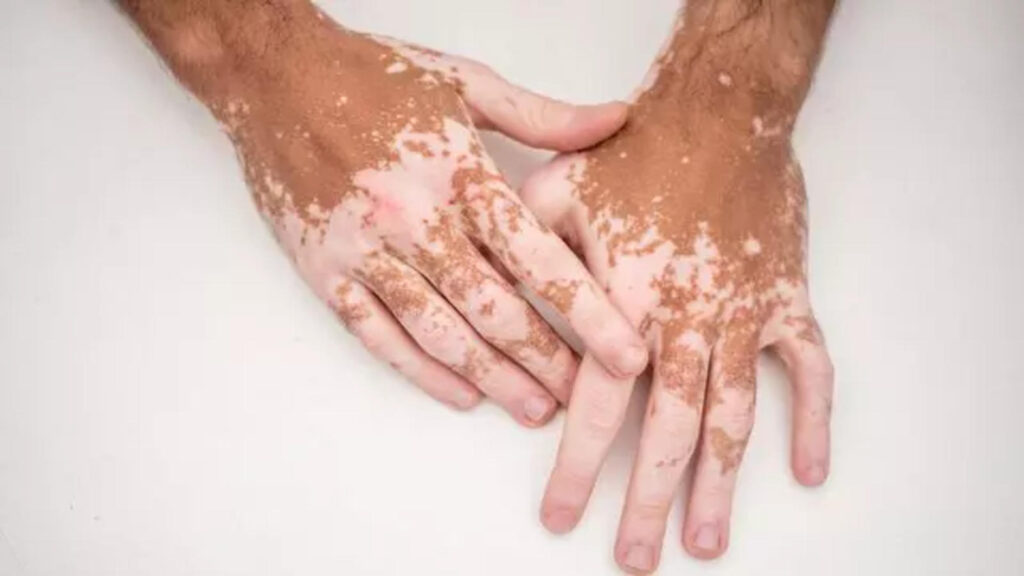
Vitiligo, a chronic skin condition, affects millions of people worldwide. Understanding its causes, symptoms, and treatment options is crucial for effectively managing this condition and improving quality of life.
Definition of Vitiligo
Vitiligo is a skin disorder characterized by the loss of pigment-producing cells, resulting in depigmented patches on the skin.
Historical Background
Historical records dating back to ancient civilizations mention cases of vitiligo, with treatments evolving over time to address the condition.
Prevalence and Impact on Society
Vitiligo affects individuals of all ages, races, and genders, with a significant social and psychological impact due to its visible nature.
Causes and Risk Factors
Various factors contribute to the development of vitiligo, including autoimmune responses, genetic predisposition, and environmental triggers.
Autoimmune Factors
In vitiligo, the immune system mistakenly attacks and destroys melanocytes, the cells responsible for producing pigment in the skin.
Genetic Predisposition
Individuals with a family history of vitiligo are at a higher risk of developing the condition, suggesting a genetic component to its occurrence.
Environmental Triggers
Factors such as stress, sun exposure, and certain chemicals can trigger or exacerbate vitiligo in susceptible individuals.
Symptoms and Diagnosis
The primary symptom of vitiligo is the appearance of depigmented patches on the skin, with various types and diagnostic criteria used to classify the condition.
Depigmented Patches
Vitiligo presents as white or light-colored patches on the skin, often symmetrically distributed on body parts like the face, hands, and feet.
Types of Vitiligo
Different types of vitiligo, including localized, generalized, segmental, and universal, exhibit unique patterns and characteristics.
Diagnostic Tests and Criteria
Dermatologists use a combination of physical examinations, medical history reviews, and specialized tests to diagnose vitiligo accurately.
Treatment Options
While there is no definitive cure for vitiligo, various treatment options can help manage symptoms and promote repigmentation of the skin.
Topical Therapies
Topical corticosteroids, calcineurin inhibitors, and vitamin D analogs are commonly prescribed to reduce inflammation and stimulate melanocyte activity.
Phototherapy
Light-based treatments such as narrowband UVB therapy and excimer laser therapy can help repigment affected areas of the skin over time.
Surgical Procedures
Surgical interventions like melanocyte transplantation, suction blister grafting, and tattooing can restore pigment to depigmented areas for cosmetic improvement.
Coping with Vitiligo
Managing the psychological effects of vitiligo, seeking support from others, and adopting healthy lifestyle practices are essential for coping with the condition.
Psychological Effects
The visible nature of vitiligo can lead to feelings of low self-esteem, depression, and social anxiety, emphasizing the need for mental health support.
Support Groups and Resources
Engaging with vitiligo support groups, seeking counseling, and accessing online resources can provide valuable emotional support and practical guidance.
Lifestyle Tips for Managing Vitiligo
Protecting the skin from sun exposure, maintaining a balanced diet, managing stress levels, and avoiding harsh chemicals can help manage vitiligo symptoms effectively.
Conclusion
In conclusion, understanding the causes, symptoms, and treatment options for vitiligo is essential for individuals affected by this skin condition. By staying informed and making informed decisions, individuals can take proactive steps to improve their quality of life and overall well-being.
You may also like: Reasons Of Hair Falls
FAQs:
- Is vitiligo contagious?
- Can vitiligo be cured completely?
- Are there any home remedies for treating vitiligo?

